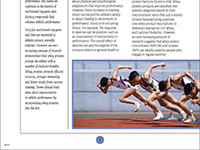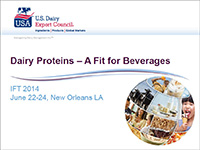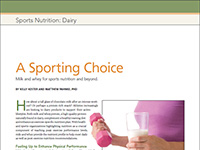Health & Wellness > Dairy Proteins (Whey & Milk)
Exercise Recovery
U.S. whey proteins are well known as a key component of training regimens for competitive body builders and other professional athletes. Yet, U.S. dairy proteins are no longer just for hardcore gym enthusiasts. All levels of sports enthusiasts from avid weekend warriors to casual gym-goers can benefit from products that contain high-quality dairy proteins like U.S. whey proteins, as part of an overall active lifestyle. Opportunities abound for formulators to innovate on-the-go nutrition with U.S. whey and milk proteins for people to eat before, during or after exercising.
Notably, whey proteins support faster recovery from a bout of exercise and can also help:
- Post-exercise muscle repair and recovery: High-quality proteins, like U.S. whey protein, can be an important part of the post-exercise recovery plan. During exercise, muscle goes through a normal process of breakdown and repair. Consuming high-quality U.S. whey protein after exercise can help speed up the repair process and reduce soreness by increasing muscle synthesis1.
- Build lean muscle: Maintaining and building lean muscle is an important goal for everyone. The good news is that stimulating muscle protein synthesis (lean muscle growth) may be achieved with as little as 10g of whey protein after resistance exercise2.
- Improve next workout performance: Consuming whey protein during and/or after exercise also can help with recovery by improving strength, helping to reduce markers of muscle damage and improving performance at the next exercise bout.
1 Witard OC, Jackman SR, Breen L, Smith K, Selby A, Tipton KD. Myofibrillar muscle protein synthesis rates subsequent to a meal in response to increasing doses of whey protein at rest and after resistance exercise. Am J Clin Nutr. 2014;99(1):86-95.
2 Tang JE, Manolakos JJ, Kujbida GW, et al. Minimal whey protein with carbohydrate stimulates muscle protein synthesis following resistance exercise in trained young men. Appl Physiol Nutr Metab. 2007;32:1132-1138.



